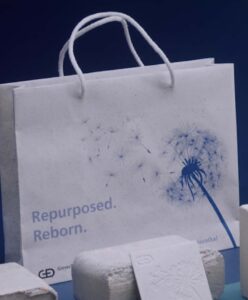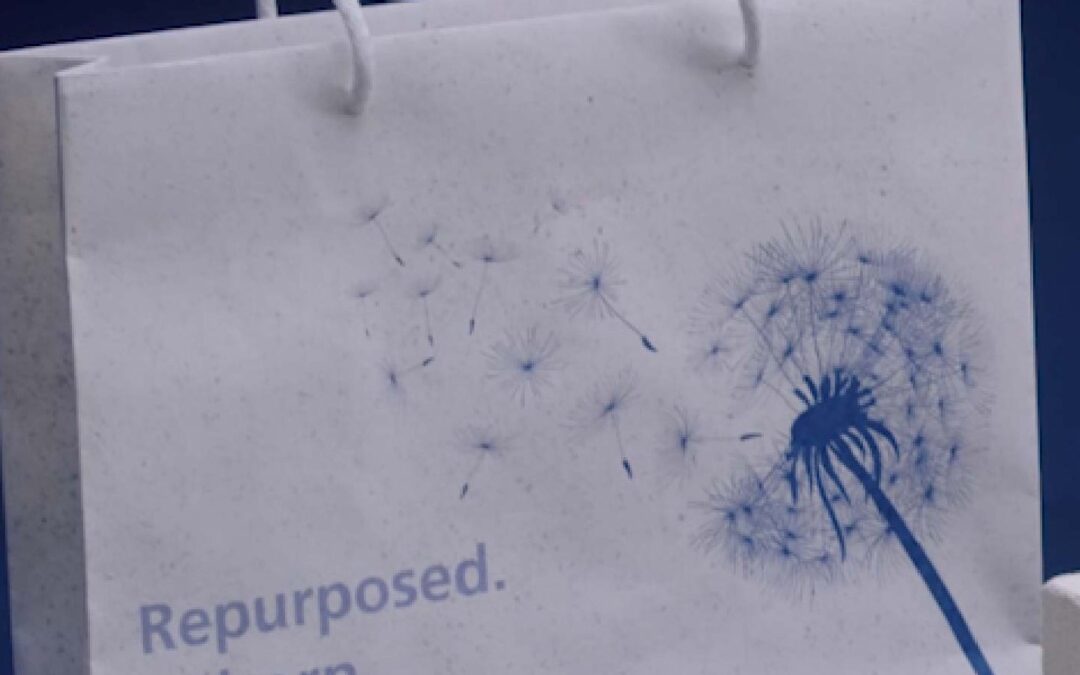Nominating Organziation Name : Giesecke + Devrient
Date the Innovation was Implemented/Released
Organization that owns Innovation
Country/Countries of Implementation:
The banknote fiber extraction solution can have massive international sustainability benefits, and will be launched globally. It is applicable wherever cotton based banknotes or hybrid substrates are the substrate of choice. The global scope is highly significant as more than 94% of global banknotes are paper or composite. A substantial volume of around 200,000 tonnes of (unfit) banknote material per year could be treated, requiring no water and no chemicals. This method of decomposing banknotes exceeds by far all standards regarding security and shred sizes (e.g. P5 acc. To DIN 66399). These fibers can be added to the pulp at the paper making process and become a part of almost any kind of product which is made out of paper.
The order from a first central bank customer for installing a pilot project has already been signed and other central banks are strongly interested. We expect more projects very soon.
Project Description
The Banknote fiber extractor is a groundbreaking innovation. It is a new, innovative system for securely and sustainably destroying large volumes of banknotes, and generate usable recyclable cotton and cellulose fibers as output material. This new system has the potential to become the new standard for banknote destruction – a game changer for the segment of highly secure banknote destruction and many options in regards to recycling.
The BFE is a green alternative for handling and destroying unfit banknotes and material of cotton or hybrid substrates.
Destroying banknotes, high security material such as paper, trims or sheets is a key operation at any central bank or printing plant/ paper mill. Today, banknotes are shredded to defined shred sizes with traditional equipment (shredders, granulators). This commonly used cutting process damages and shortens most of the embedded fibers.
A globally applicable recycling solution for traditional shreds is missing. So far, the extraction of single fibers of material with high wet strength such as banknotes, without using water or chemicals, has been a big challenge.
This completely changes with introduction of BFE.
The BFE is a turbo mill which destroys banknotes and banknote material to single fibers by using, instead of knives, only mechanical forces such as pressure shear stress, accelerations, impacts and pressure changes.
These fibers, which can also be compacted to briquettes, keep their initial length.
These fibers can be added to the pulp at the paper making process.
Impact on the cash cycle
Banknote Fiber Extraction fundamentally changes the way of dealing with unfit banknotes. More and more central banks seriously consider ESG goals in their strategies and commitments. Thus, the BFE is a fully future ready option to fulfill sustainability goals at the material handling whilst reducing the carbon footprint.
BFE provides the only opportunity to have a closed cash-cycle: from the production of the banknotes up to the destruction while making new raw material out of the unfit banknotes.
Therefore banknote destruction becomes the first step in recycling of this material. A valuable resource is produced at the moment, unfit banknotes are destroyed – and no further treatment is necessary. Banknote material is being transformed to a valuable resource right at the destruction process. The customer becomes the creator of a recyclable material and is herewith taking responsibility for green waste management. There is no additional shipping or the participation of a third party for material preparation needed.
Additionally, the BFE can be added to or replace the traditional offline shredding system. By substituting conventional shredders with regular change of the knives, the BFE has no sharp individual parts with such a strong abrasion – service and maintenance becomes easier and more convenient.
Disposal can be done via regular paper waste bin according to EU norm EN 643:2014 – this means the waste is classified as paper waste and ultimately ends up at the recycler.
Ultimately, there is also a real business case behind BFE: central banks/ printworks can partner with local recycling organizations and sell fiber material.
Ease of Roll-out/Integration
Theoretically and technically, the BFE can be integrated as stand-alone solution, but also almost seamlessly to the existing cash center equipment. Already existing machinery at the destruction center such as compacting systems/ presses can most likely stay in place. Furthermore, already existing shredding solutions can be modified to be used as feeding component. Throughputs for the small-footprint BFE consider common capacities of customers starting at < 100 kg/h up to 1t/h.
Changes for the staff are minimal: there is only a low level of additional training needed for the operator; once the system is set up, the operation is highly convenient and almost no additional maintenance effort is necessary.
Resilience of the innovation
Despite changes in some countries, banknotes remain an enduring payment in the global cash cycle, and volumes are still growing. A secure and efficient destruction of unfit material continues to be essential. With the BFE, central banks, printworks and paper mills get the option to add a component to their destruction equipment which ensures that they produce the best possible format for repurposing, today and tomorrow. The more the world develops, the more the awareness for sustainability is being generated.
Consequently, more and more central banks seriously consider ESG goals in their strategies and commitments. Thus, the BFE is a fully future ready option to fulfill sustainability goals at the material handling whilst reducing the carbon footprint.
The organic fibers and its variety of applications are future proven, too – since paper products will remain in tomorrows world.
Uniqueness of the innovation
BFE is the first technology ever that completely changes the method of destruction, by using pure physics only to create fibres. Historically, shredding has been the globally accepted method for destroying banknotes for many decades, and
innovations in the recent decades have been on knives and and throughput to create shreds.
On a global scale up to 200.000 tons of cotton banknote material can be treated by a more sustainable BFE process.
This enables unfit banknotes and material being treated, without the support of any 3rd party and without the use of chemicals and water, to a promising material that can be repurposed easily. This is a patented technology.
Environmental impact
The BFE has several impactful positive influences on the environment. First of all, no water and no chemicals are needed at all for preparing the material for further use/ repurposing. The decomposition of banknotes only takes place due to high pressure shear stress, pressure changes with compression/ decompression processes and high turbulences due to high circumferential speed.
The positive consequence of this process is to have generated a valuable raw material that can be reused in many different products. It can be used for example as input material in the paper industry. With that, virgin fibers can be substituted by this material and therefore save natural resources.
Additionally, this solution can prevent unfit banknotes from being sent to landfill or burning, as both disposal methods have highly negative impacts on the environment. BFE supports the circular economy and helps central banks and print works to support the sustainable handling of their banknote waste.







